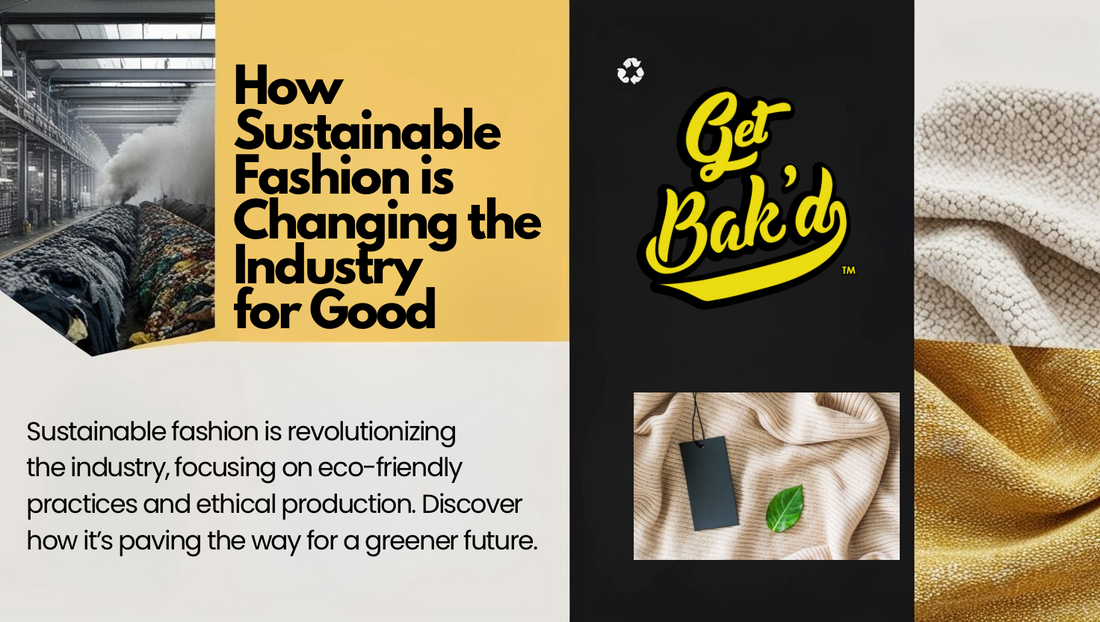
How Sustainable Fashion is Changing the Industry for Good
Share
Introduction
The fashion industry has long been associated with trends, creativity, and innovation—but also with environmental degradation and unethical practices. Enter sustainable fashion, a movement that is reshaping the industry for good. With its focus on eco-friendly materials, ethical production, and reducing waste, sustainable fashion is proving that style and sustainability can go hand in hand. At BAK’D, we’re proud to be part of this change, offering designs that look great while doing good for the planet.
The Environmental Problem with Fast Fashion
Fast fashion has dominated the industry for decades, but at a significant cost:
1. Excessive Waste
• Each year, 92 million tons of textile waste are generated, much of which ends up in landfills.
• Sustainable fashion combats this by using biodegradable materials and encouraging recycling.
2. Water and Energy Consumption
• Traditional clothing production uses vast amounts of water and energy. For example, it takes 2,700 liters of water to produce a single cotton T-shirt.
• Eco-friendly practices, like those in sustainablefashion, drastically reduce these resource demands.
3. Chemical Pollution
• Toxic dyes and chemicals used in fast fashion production contaminate water supplies, affecting ecosystems and communities.
• Sustainable brands prioritize non-toxic, environmentally safe alternatives.
How Sustainable Fashion is Changing the Industry
The rise of sustainable fashion is driving systemic changes in the industry. Here’s how:
1. Eco-Friendly Materials
• Brands are turning to organic cotton, hemp, recycled polyester, and other eco-friendly materials to create high-quality, sustainable products. These fabrics minimize harm to the environment while maintaining durability and style.
2. Ethical Manufacturing
• Sustainable fashion prioritizes ethical labor practices, ensuring workers are paid fairly and operate in safe conditions.
• By adopting transparency, brands hold themselves accountable to both their workers and customers.
3. Circular Fashion
• The shift toward circular fashion—where materials are reused, recycled, or upcycled—reduces waste and extends the life of clothing.
4. Consumer Awareness
• More shoppers are embracing eco-conscious apparel, signaling a demand for responsible practices and sustainable options.
The Benefits of Supporting Sustainable Fashion
Making the switch to sustainable fashion comes with significant benefits for consumers and the planet:
• Environmental Impact: Supporting sustainable brands helps reduce your carbon footprint and contributes to a cleaner, healthier planet.
• Better Quality: Sustainable clothing is made to last, offering timeless pieces that won’t wear out quickly.
• Ethical Confidence: You can feel good knowing your purchases support ethical labor practices and eco-conscious choices.
How You Can Make a Difference
If you’re ready to join the sustainable fashion movement, here’s how to start:
1. Invest in Quality Over Quantity
Build a wardrobe of durable staples instead of relying on disposable trends.
2. Support Sustainable Brands
Choose companies that prioritize eco-friendlyand ethical practices, like BAK’D.
3. Extend the Life of Your Clothes
Take care of your wardrobe by washing less often, mending items, and donating clothes you no longer wear.
4. Educate Yourself
Learn about the environmental and social impacts of fashion to make informed purchasing decisions.
The Future of Fashion is Sustainable
Sustainable fashion isn’t just a trend—it’s a revolution. By choosing eco-conscious apparel and rejecting fast fashion, you’re contributing to a more ethical, environmentally friendly industry.
At BAK’D, we’re proud to be part of this movement, offering sustainable designs that reflect both style and responsibility. Together, we can create a future where fashion doesn’t come at the planet’s expense.
